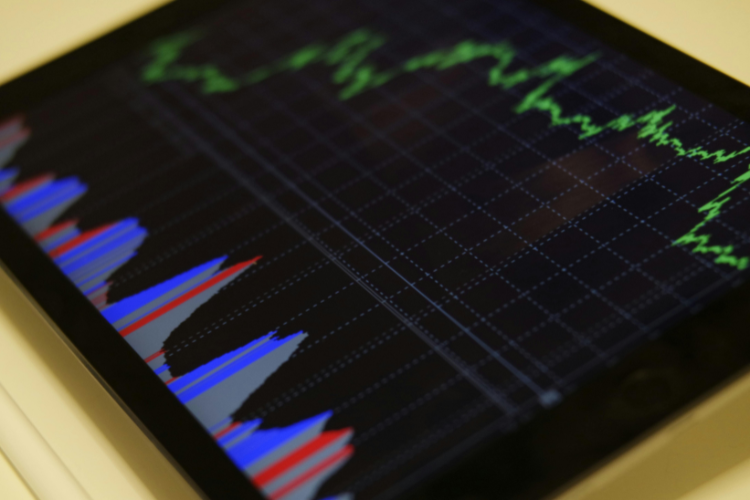Table Of Contents
- What is the Dow Jones (US30) Index Anyway?
- How the Dow Jones Is Constructed and Why Price Weighting Matters
- Why the Dow Jones Matters Beyond Wall Street
- How Dow Trends Influence Main Street Budgeting and Planning
- The Dow as a Gauge of Borrowing Costs and Interest Rate Expectations
- Why Main Street Traders Follow Dow Components Closely
- Link Dow Movement with Pricing and Inventory Decisions
- Why US30 and the Dow Jones CFD Matter to Retail Traders
- Endnote
What Is the Dow Jones (US30) Index and Why It Matters to Main Street Traders
The Dow Jones Industrial Average, dubbed the Dow, ranks among the most referred-to market indicators in the world. Yet, to most Main Street traders, it is an index whose workings are understood solely at a headline level. The movements across this index often signal waves of either optimism or caution across a much broader spectrum of the U.S. economy.
However, beneath these headlines, the US30 index shares insights about more profound shifts that affect consumer spending, financing conditions, and business confidence. Hence, its glide path is something that small businesspersons and everyday traders alike can read for timely decision-making. Here are the highlights that Main Street traders should know about the Dow and why its movement matters.
What is the Dow Jones (US30) Index Anyway?
The Dow Jones Industrial Average, or US30, commonly known as the US30, tracks 30 major U.S. companies. It focuses on those representing critical industries such as technology, finance, manufacturing, and consumer goods. These firms represent mature leaders, whose performance often runs parallel with that of the broader economy.
Unlike broader benchmarks like the S&P 500, the lower-curated list in terms of numbers allows it to be more psychologically powerful. On an aggregate level, it manifests national productivity, earnings, and business resilience with respect to a certain quarter. The Dow index is computed based on price weighting, meaning that stocks with higher prices influence the index more than those with relatively low prices.
Such a unique constitution explains why a single high-priced stock can pull an entire index up or down, irrespective of mixed performance from the rest of the component stocks. In relation to retail traders who either follow or trade instruments such as the Dow Jones CFD, this construction of an index would be highly relevant. It illustrates the case for why some company earnings or price shocks can move the index disproportionately.
How the Dow Jones Is Constructed and Why Price Weighting Matters
The companies selected for the Dow are chosen by Wall Street Journal editors, who aim to represent the backbone of the American economy. Sometimes the roster adjusts to reflect changes in financial leadership. Tech giants today, for instance, are significantly more important than classic industrial companies. This changing make-up guarantees the index remains pertinent and reflects sectors affecting employment, creativity, and long-run growth.
Unlike many other indexes, the Dow acts differently since it is price-weighted rather than market-cap-weighted. A few expensive stocks may amplify market reactions, therefore giving the index more volatility or greater optimism than the general economy. Main Street merchants who get this may correctly interpret Dow moves, so as to distinguish accurate economic signals from price-driven distortions.
Why the Dow Jones Matters Beyond Wall Street

Though often treated as a Wall Street indicator, the Dow’s importance goes well beyond Main Street. When the index is on the rise and doing so into a trend, it generally means increasing consumer demand supported by economic policies and expectations of more substantial profits. These signals will determine how consumers will feel about any investments they may intend to make, hence influencing the flow of such income into the doors of local businesses.
When the index falls, it may reflect an environment where rising costs, slowing demand, or a tightening of credit conditions are evident to small businesses. All these worries eventually seep down to small businesses. A weakening Dow could mark expectations of a drop in consumer numbers, reluctance in hiring, or even stalling in business expansion.
How Dow Trends Influence Main Street Budgeting and Planning
Many firms anticipate high sales and demand once the market is showing strength and the index is moving up. This confidence allows the buildup of inventories, increases efforts towards marketing, and brings about hiring.
If the Dow now moves downward, this could signal caution on the part of business owners. Lower confidence in markets can further cause reduced industry demand, calling for companies to change their budgets with respect to reduced sales. This equally means cutting down on discretionary spending or sticking to a conservative cash-flow approach.
The Dow as a Gauge of Borrowing Costs and Interest Rate Expectations
The Dow is also one of the predictors of interest rates and borrowing costs. Strong economic data drives an index increase that suggests the Federal Reserve should think about tightening its monetary policy to avoid overheating in the economy. In the scenario that follows, an interest rate rise turns into an expensive or unaffordable experience for both customers and companies, therefore affecting mortgage loans, credit lines, and corporate funding.
Sharp losses in the Dow, on the other hand, can point to symptoms of economic uncertainty that might motivate the Federal Reserve to relax policy or use fixed rates. These rate cuts and dovish signals may lead to lower borrowing costs, thereby boosting real estate, consumer purchases, and small business investment.
Why Main Street Traders Follow Dow Components Closely
These 30 companies are heavyweights, and their performance will give insights into the whole economy. Retailers indicate consumer behavior, industrial strength is reflected in the signals from industrial companies, and banks give hints on credit availability and financial stability. Earnings reports from these companies usually inform the economy in real time.
Retailers doing well can be a signal of increased consumer confidence, which is helpful for traders and small businesses. Weaknesses in industrial companies suggest declining manufacturing activity or supply chain concerns. These linkages help Main Street traders build better-informed strategies, not only for large-cap stocks, but also with commodities, currencies, and small-cap opportunities that are influenced by the economic cycles.
Link Dow Movement with Pricing and Inventory Decisions

Small businesses may use such trends in the Dow to improve pricing and inventory strategies. When the index is robust and the market sentiment is buoyant, companies may keep prices high, increase levels of stock, or enjoy better terms of supply. Environmental optimism creates versatility in supplier offerings, allowing retailers and service providers to plan quite aggressively.
When the Dow has been down for an extended period, businesses are accustomed to changing tack. Lower demand expectations may trade off inventory, modify order quantities, or hold promotions to maintain revenues. Stock market reactions very often occur before changes by consumers; hence, the Dow serves as an early-warning tool for operational planning.
Why US30 and the Dow Jones CFD Matter to Retail Traders
For retail traders, using an instrument like the Dow Jones CFD is the easiest way to engage directly with the index. CFD trading gives the trader the ability to speculate on the movements in the US30 across their platform without requiring significant capital investments, hence making it accessible in the pursuit of short-term strategies.
Educational US30 explainers and live charts share how traders can see price behavior during events such as the releases of earnings, inflation reports, or Federal Reserve meetings. That means that Dow traders would like to attach their earnings to the broad economic sentiment rather than to individual stocks. The rapid exposure of the Dow to all major economic news makes the instrument a fair ground for trend-based and event-driven strategies.
Endnote
The Dow Jones (US30) Index summarizes 30 large companies, making it a potent indicator of economic sentiment as well as financial conditions and consumer behavior. For Main Street merchants, knowing its structure and reacting to its signals can help with more exact budgeting, improved pricing, and successful risk management. The US30 is a priceless tool for negotiating market possibilities and daily corporate decisions, whether used as a macroeconomic guideline or distributed via means such as the Dow Jones CFD.















